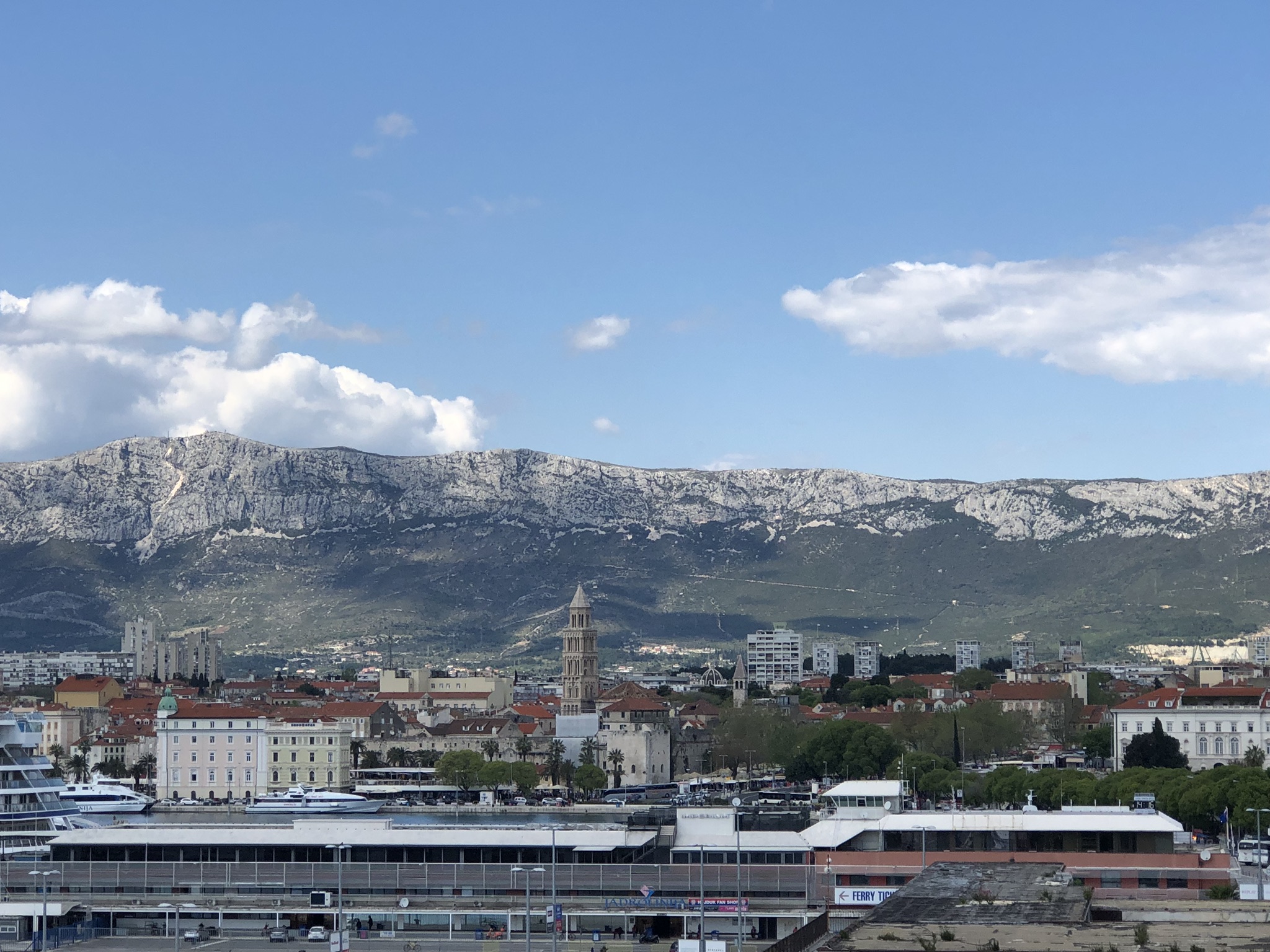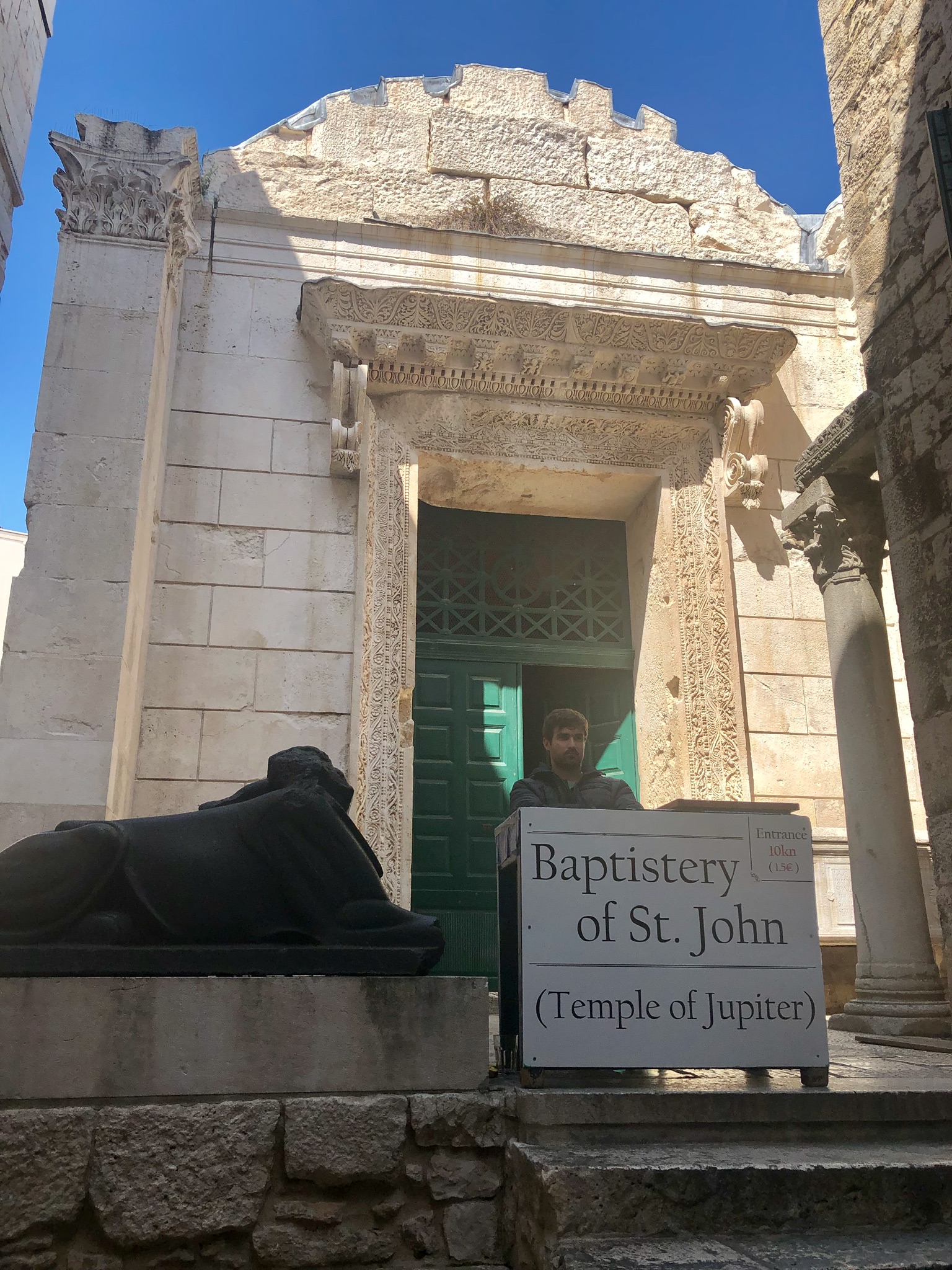Want to brush up on a few facts before you visit Split? I’ve got an easy to remember list that may help you plan your stay.
Split is the largest city on the Dalmatian Coast
While Split is the largest city on the Dalmatian Coast, it feels small when you’re within the walls of the Palace. The city has a very local feel with vendors and cafes scattered about. The backdrop of the deep blue Adriatic sea adds to Split’s charm.
How did Split get it’s name?
The city was named after shrubs bearing beautiful little yellow flowers that grow around the area. These shrubs are actually called Spanish or weaver’s broom today.
The modern day city of Split has had several names but after the middle ages, it became known as Split.
St. Domnius is the oldest Catholic Cathedral in the World
Originally built as Diocletian’s mausoleum, St. Domnius is considered one of the oldest cathedrals in the world.
The Christian’s arrived during the middle ages and converted the mausoleum into a place of worship and removed all pagan images.
They also removed the sarcophagi of Diocletian, who was a notable persecutor of Christians. It is estimated Diocletian is responsible for the death of over 150,000 Christians during the 3rd century. After they removed his remains, the Christians threw him out in the sea.
Temple of Jupiter
Diocletian had three temples built within his walled fortress. Unfortunately, the Temple of Jupiter is the only one that remains. It is unclear whether Diocletian truly believed he was the god of Jupiter reincarnate, or simply the son of Jupiter. But it is reported that he went mad in his later years.
Either way, it is a bold proclamation to make, even from the Roman Emperor. The temple door is still guarded by an Egyptian Sphinx dating back to 1500 BC. Unfortunately, from a preservation standpoint, the sphinx was defaced by the Christians during the middle ages.
The Christians also renamed the Temple the Baptistery of St. John, in honor of John the Baptist.
There is a nominal fee to enter the temple and the temple is quite small.
Home to Diocletian
Diocletian was born near modern day Split in 244 AD. After ruling the Roman Empire for 20 years, he retired close to his birthplace. Before retiring, likely with his end game in sight, he had his Palace built.
Diocletian’s palace has been designed as a UNESCO World Heritage site since 1979.
Because the Old Town has been built within the boundary of the original palace, it is free to guests. There are a few exceptions, such as the basement and the Temple of Jupiter.
It is remarkable how the old meets new as buildings have been built around the original Palace structure.
Egyptian Sphinxes
It is unknown how many Egyptian artifacts Diocletian brought to his palace. But what is known is that he had an attraction to Egyptian art and statues. He particularly liked the Sphinx.
There are three remaining sphinxes in Split. One sits proudly in the rectangular court, at the center of the palace known as the Peristil or Peristyle. Interestingly enough, this sphinx appears to be unaltered.
Another sits outside of the Temple of Jupiter, which has been renamed the Baptistery of St. John as seen above. And the final remaining sphinx has been moved to the museum in Split.
Easily Walkable
Old Town Split is not only walkable, but you will not see any cars inside the palace walls.
While it is considered a pedestrian zone, it is important to note the walkways can get quite narrow and slippery. The streets are a combination of large and cobblestones and can be uneven in places.
Old Town could easily be considered a maze of winding narrow streets. But don’t be worried. It is a relatively small area. If you find yourself lost, it is easy to back track to the palace or peristil.
A word of caution…. Anyone with mobility issues should wear non slip shoes and take caution while walking and exploring. This is hard to do when your looking at all the beauty around you. But better safe than sorry.
Riva – Promenade
The Riva is a bustling promenade full of restaurants, shops and vendors. The Riva didn’t exist when the Palace was built. The entire area was under water. It wasn’t until the ocean receded that the promenade existed.
You can easily walk the Riva and review all the menus before you chose which fabulous restaurant suits your fancy.
If you don’t want to eat a meal, you can walk toward the marina and look at all the beautiful sailboats. There are several ice cream vendors and plenty of park benches to enjoy the water view.
If shopping is your thing you will find many vendors selling: Olive oil, lavender sachets, jewelry, wine, clothing and gifts.
Climate
Split gets over 2800 hours of sunshine a year making it a great vacation destination. But even with the milder climate it is still a port town. Storms and rain can blow in quickly so it is best to travel with a light rain coat, even if there isn’t a cloud in the sky.
The average temperature in Split ranges from 87 – 65 degrees Fahrenheit in the summer months. With the winters coming in at a mild 58 – 42 degrees Fahrenheit.
Sigmund Freud
Sigmund Freud vacationed here at least once in September of 1898. Now that’s an interesting fact if you love psychology.
In the passage connecting the Fruit Square and the Riva you will find this door. The plaque is translated as “Father of Psychoanalysis stayed in this house in September 1898.
Freud even mentioned his visit to Split in his book, The Interpretation of Dreams.









